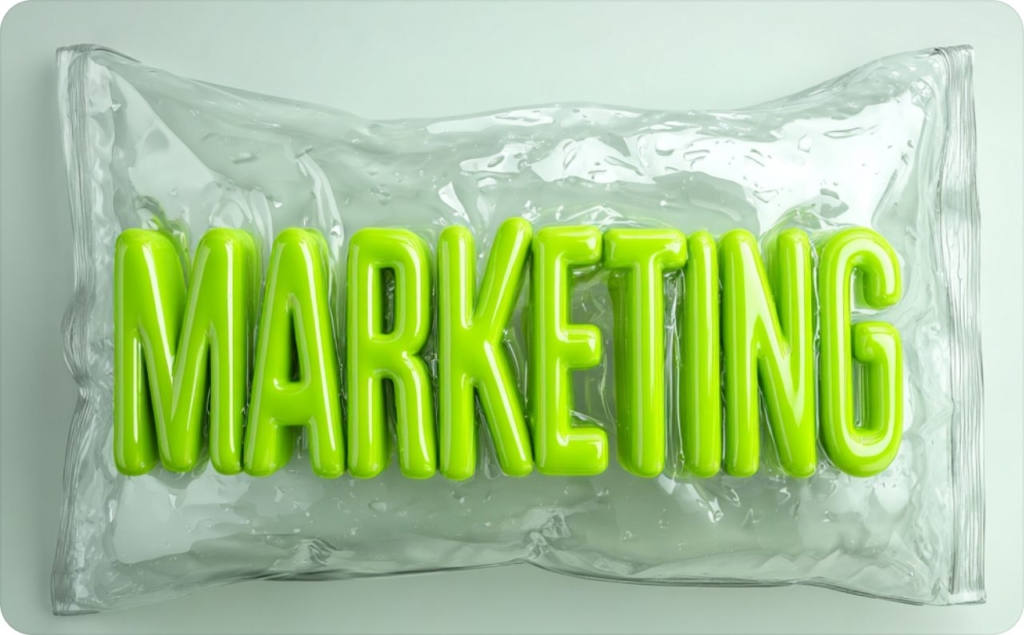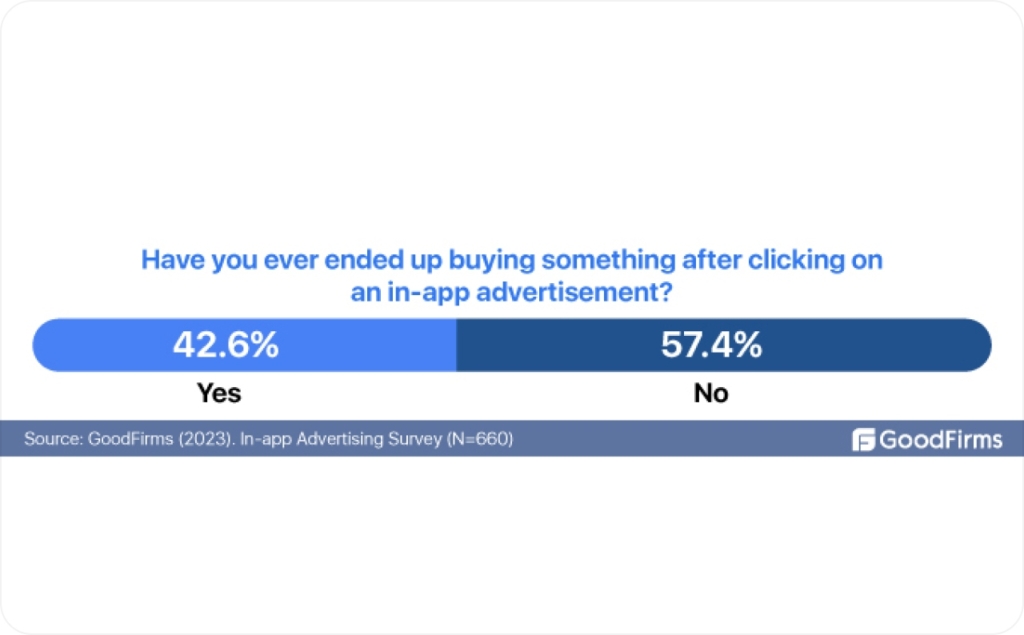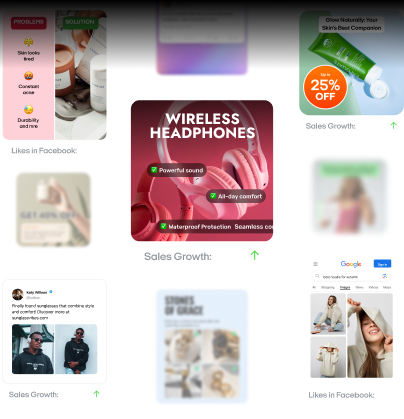9 big differences between product and institutional advertising every small business should know
Ever wondered why some ads sell products while others sell trust? Zeely AI analyzed top-performing campaigns and distilled expert insights to help small businesses choose the right advertising approach for success.
If you’re looking for a quick distinction, product advertising boosts immediate sales, while institutional advertising strengthens your long-term brand reputation. Think of it as short-term profit versus long-term equity.
Both are vital, but leaning too heavily on one can leave you with unmet goals — whether that means failing to drive conversions or missing out on stronger brand loyalty.
You might be pouring time and money into campaigns that spark quick sales yet leave your audience disconnected from your brand’s bigger purpose. On the other hand, maybe you’re sharing your brand’s story with heart but losing momentum in the revenue department. Both scenarios are common pitfalls.
According to SocialMediaToday, 77% of consumers say they’re more inclined to buy from brands they follow on social media, underscoring the impact of ongoing branding efforts.
Meanwhile, some marketers say that brand-focused advertising can lift overall brand metrics by nearly 59%, reminding you why institutional campaigns deserve real attention.
Keep in mind that both strategies work together in a well-rounded marketing plan. As a small business owner, you want to see results now but also stay relevant and trusted in the future. You’ll learn how to balance these priorities in the sections below.

What’s product advertising and how can it boost your sales?
Product advertising zeroes in on a single item or service you offer. If you’ve ever seen Adidas promote a fresh sneaker drop or Pandora highlight a holiday collection, that’s product advertising in action.
It relies on clear calls to action and a simple message to drive conversions now, which is perfect for limited-time sales, seasonal promotions, or new-product launches.
Beyond flashy visuals and discount codes, product advertising often uses benefit-focused language to show why your offering beats the competition.
For example, a local bakery might promote its new gluten-free cupcakes by highlighting taste, freshness, and convenience — then include a coupon to nudge potential buyers. This direct approach can quickly turn browsers into buyers, giving you a faster return on investment.
As a small business, you can measure success using metrics like click-through rates, sales volume, and conversion rates. Analyzing these numbers tells you exactly how effective your product ads are, helping you adjust your approach for better results next time. That way, your marketing budget stays lean and efficient.
What is institutional advertising and how does it build your brand?
Institutional advertising flips the focus. Instead of championing a specific product, it highlights your overall identity, mission, and values. Think Coca-Cola associating its brand with shared happiness, or Patagonia emphasizing environmental stewardship.
These ads spark consumer trust and brand loyalty by placing the big-picture story front and center, which can keep customers coming back long after that first purchase.
If you’re a small business owner, you might run ads showcasing your commitment to the local community or your passion for sustainable sourcing.
By sharing your “why,” you connect with people on a deeper level, earning goodwill that can lead to repeat business. Although institutional ads don’t always drive immediate sales, they strengthen your reputation over time, which helps you stand out in competitive markets.
One challenge with institutional advertising is measuring its impact. You can’t simply track direct conversions the way you would with a product ad. Instead, you might monitor brand sentiment, social media engagement, or customer feedback.
Surveys, online reviews, and community events can also give you a sense of how well your branding resonates. While this may require more time and patience, the long-term payoff can be huge, especially if you’re building a business meant to last.
Why do these advertising methods matter for you?
Relying only on product ads may deliver fast wins but overlooks the emotional pull that fosters ongoing loyalty. Conversely, focusing solely on institutional ads can help you build a dedicated following but might underdeliver on immediate revenue. By blending direct-response marketing with brand-focused initiatives, you’ll capture short-term gains and set the stage for long-term growth.
Imagine running social ads for your new product line while also launching a blog series on your brand’s values and story. Your quick-sale campaign brings in revenue right away, while the brand-building content fosters stronger relationships with your audience. Over time, you’ll be seen not just as a vendor, but as a trusted partner in your customers’ lives.
From here, we’ll explore the finer points of product advertising in depth, then move on to institutional advertising, followed by a comparison to help you decide which approach, or which combination, best serves your goals.
By the end, you’ll have a comprehensive strategy that drives ROI today while cementing your brand’s place in consumers’ minds for tomorrow.
Need quick sales? Here’s how product advertising helps you
If your ads aren’t turning views into sales, you might be missing the right mix of product clarity and urgency. Product advertising offers a fast way to capture people’s attention and get them to act.
Think of it as a shortcut to boosting revenue, especially when you’re unveiling a new product or running a special promotion. Unlike institutional ads that build trust over time, product ads speak directly to buyers who are ready to take action and that can lead to immediate results.
What is product advertising and why should you care?
Product advertising hones in on one specific product, service, or offer. It’s the most straightforward form of direct-response marketing, where each element, like your headline, images, or video, and even the button copy, pushes customers to do something now. You’ll spot these ads on Instagram feeds, Google search pages, YouTube videos, and even inside apps.
Let’s say you run a SaaS startup with a new feature that automatically tracks expenses. A product ad might say, “Tired of messy receipts? Automate your expense reports now.”
This kind of message helps potential customers see exactly how your feature solves their problem. Small businesses love product ads because they’re direct, easy to measure, and quick to optimize.
Which ad formats and channels work best for you?
When choosing your ad format, think about where your audience hangs out and how they like to consume content. Image ads are great for simple, eye-catching visuals. Video ads made with Zeely AI let you show your product in action.
Carousel ads let you highlight multiple features or items. You can even place in-app ads for people who scroll through their favorite apps daily.
- Meta. Good for visually driven brands or those targeting niche interests
- Google Ads. Perfect if you want to appear when users are searching for specific keywords
- TikTok. Great for fun, short videos that resonate with a younger demographic
- YouTube. Ideal if you have a compelling story or demo to show in video format
Choosing the right platform depends on where your target audience spends time. If you’re a bakery, Instagram might help you show mouthwatering images of your new pastries. If you sell business software, LinkedIn or Google Ads might be more relevant.
How do you know when you’re ready to advertise?
You’ll know you’re ready if you have a clear product offer, an updated landing page or website, and a strong call-to-action. If you’ve tested your pricing or at least have a fair idea of how much your audience is willing to pay, you can use product ads without feeling like you’re flying blind. It also helps if you know the basic pain points your customers face, because then you can tailor your messaging to address them.
Some small business owners wait until they’ve gotten a few organic sales or reviews first, so they know their product genuinely works.
Others jump in as soon as they have a working product, relying on ads to generate quick awareness. Either approach can work as long as you have at least some clarity on your target market and what makes your product worth buying.
Why do product ads help you sell more?
At its core, product advertising is conversion-focused. Everything points buyers toward a purchase or sign-up. Stats from Shopify indicate product ads can generate up to 70% of direct conversions in certain eCommerce niches, while GoodFirms found 42.6% of smartphone users buy after clicking in-app ads. If your ad shows them exactly why they need your offer, it’s more likely they’ll hit “Buy Now.”
Another advantage is feature-to-benefit translation. Instead of saying, “Our speaker has Bluetooth 5.0,” say, “Get faster pairing and crystal-clear sound.” That way, customers see how the feature improves their life.
This tip also works for local businesses. A bakery ad might say, “Indulge in our new lemon tart — fresh this week only,” which instantly gives people a reason to swing by before it’s gone.

Who should you target for faster results?
Targeting is crucial for getting your ads in front of the right audience. You can use interest-based targeting if you know the hobbies or brands your audience follows. Lookalike audiences help you reach people with traits similar to your best customers. And remarketing helps reel back shoppers who visited your site but didn’t buy.
These tactics work because they aim for people already somewhat interested in what you’re selling. By refining your target group, you avoid wasting money on ads shown to folks who have no reason to care about your offer. Plus, you can track which audience segments convert the best to optimize future campaigns.
What mistakes should you avoid in product advertising?
One common mistake is sending people to a weak landing page. If your ad promises 20% off and your website doesn’t show that discount, you’ll frustrate potential buyers. Also, using generic copy, like “Best products here!”, won’t grab attention. Show how your product solves a real issue or offers a memorable experience.
You should also define your key performance indicators before launching. Maybe you’re tracking conversions, click-through rates, or return on ad spend. By checking these metrics frequently, you’ll see if your ads are working or if it’s time to change something up.
For many small businesses, product advertising is the easiest place to start. It works for limited-time promos, fresh product launches, or holiday deals where you need results now. If you focus on a clear message and instant benefits, you’ll likely see higher traffic and sales in a short time.
Soon, we’ll explore institutional advertising, which goes beyond immediate sales to build trust and recognition for the long haul. When you combine the two, you can meet short-term revenue goals while nurturing an ever-growing base of loyal customers.
Do you want more than just sales? Here’s how institutional advertising builds trust
If your customers don’t trust you, even your best product ad won’t make a difference. That’s why institutional advertising matters for long-term growth. Most businesses focus on selling items, but the ones that stand out go a step further.
They invest in corporate branding strategies that highlight deeper values, shaping how people see the entire organization. When people believe in your purpose, they’re more likely to stay loyal and spread the word.
What does institutional advertising mean for you?
Institutional advertising is all about building brand reputation, not rushing for quick sales. Instead of saying “buy this,” it says, “this is who we are and why it matters.”
Picture Coca-Cola running ads about inclusivity rather than just another soda, or Patagonia shining a spotlight on environmental activism instead of pushing a jacket sale. These bigger stories help people connect emotionally with a brand.
For a smaller local business, like a coffee shop or bakery, this might mean showing how you source your ingredients, treat your employees, or support local charities.
By highlighting what makes your business special, you give customers a reason to care beyond the product itself. That personal touch often leads to positive reviews, referrals, and stronger ties in your community.
How do institutional ads win long-term loyalty?
When you focus on long-term reputation management, you connect with people on a deeper, more emotional level. Over time, that connection fuels brand loyalty, which means customers come back, even if a competitor offers a discount.
They’ll remember how your brand made them feel and why it aligns with their own values. This is why many organizations put effort into consistent messaging, whether it’s a social media post, an event sponsorship, or a community project.
Tracking immediate clicks or conversions doesn’t always show how well these ads work. But you might see an uptick in brand mentions or get tagged more often in social media conversations. These signals indicate that people recognize your brand.
According to Statista, institutions in the United States spent almost 1.75 billion U.S. dollars on static ads in 2021 — a jump of about 60 percent from the previous year. This surge shows how many businesses now realize the power of shaping public perception over time.
How can you plan and measure institutional ads?
When planning institutional ads, start by defining your core message — the belief or value you want to share. It can be a short video explaining your origin story, a blog post about your charity work, or a series of social media snapshots from behind the scenes.
Make sure each piece of content ties back to what you stand for. For instance, a local bakery could post a brief reel showing family recipes passed down for generations, adding a personal touch people will remember.
Measuring success here is less about direct sales and more about brand sentiment. You can track this by looking at comments, reviews, and how often people tag or mention you positively.
Surveys can help too, if you ask questions about how customers perceive your values or mission. While you won’t see changes overnight, 3–6 months is often enough time to spot improvements in recognition, social engagement, or word-of-mouth referrals. The goal is to build loyalty that grows steadily, rather than score a quick sale that fades fast.
Why is institutional advertising worth it on a small budget?
You don’t need a massive budget to earn trust. A heartfelt Facebook ad, a simple behind-the-scenes video, or a local press mention can all show people who you are beyond your products.
Authenticity is the key — stand for something more than profit, and your audience will remember you for it. If you’re introducing a new brand, rebranding an old one, or simply trying to show the heart behind your business, institutional ads give you a solid foundation.
They won’t replace product campaigns; they enhance them. Adidas, for instance, doesn’t just promote sneakers, it highlights empowerment and sustainability.
You can replicate that approach by defining your own values, sharing them clearly, and letting your audience see the bigger vision behind your day-to-day operations. When people believe in that vision, they’ll stick around, and tell others about you, too.
Stay tuned for a side-by-side comparison of product vs. institutional advertising, so you can decide exactly how to blend them for maximum impact.
Key takeaways
- 1
Big spend on trust
U.S. brands poured $1.75 B into institutional display ads in 2021, up 60 % YoY
- 2
Brand-lift timeline
Track tags, reviews, and surveys—expect results after 3–6 months, not overnight sales
- 3
Low-cost impact
Even a $0 behind-the-scenes post or local news piece can humanize your brand like Coke or Patagonia.
Not sure which ad strategy fits your business? Compare product and institutional here
If you’re unsure whether to run product-focused campaigns or lean into brand storytelling, you’re not alone. Plenty of marketers spend their budgets on the wrong ads at the wrong time. In this section, you’ll learn how product advertising and institutional advertising work, what each approach costs, and why blending them often drives the best results.
You’ll see how they differ in goals, messaging, metrics, costs, and timeframes. You’ll also find tips for tracking brand sentiment without breaking the bank, plus advice on scheduling each strategy so you can grow your brand and still get fast returns.
What makes product advertising different from institutional advertising?
| Feature | Product advertising | Institutional advertising |
| Primary goal | Generate immediate sales and conversions | Build brand reputation, trust, and long-term loyalty |
| Message focus | Product features, discounts, urgency-based offers | Core values, mission, emotional storytelling |
| Call-to-action | “Buy now,” “Get yours,” “Shop today” | “Learn more,” “Explore our story,” “Join our mission” |
| Timeframe for ROI | Short-term | Long-term |
| Key metrics | CTR, CPC, ROAS, direct conversions | Brand sentiment, recognition, non-click mentions |
| Typical cost structure | Often pay-per-click — can rise with competition | May rely on organic content or brand-focused ads |
| Content examples | Promo ads on Meta or TikTok, landing pages, email blasts | Brand stories on YouTube, founder videos, mission-based blog posts |
| Emotional intent | Low to moderate — logic-based with clear incentives | High — emotional branding designed to create deep connections |
| Best use cases | Flash sales, product launches, seasonal promos | Market entry, rebranding, trust-building initiatives |
Product ads deliver quick wins and focus on direct returns. Institutional ads work slowly but cultivate long-term loyalty. Understanding each method’s strengths helps you pick the right tool for the right moment.
When should you use each approach?
A product campaign is your best friend if you’re looking for short-term gains. Maybe you’re rolling out a limited-time discount, a buy-one-get-one offer, or a brand-new item.
In those situations, look for high-traffic channels, like Instagram Reels, TikTok, or Google Search Ads, that can show results in days. You’ll know your ad is clicking with audiences if you see good numbers on CTR, CPC, or ROAS.
On the other hand, an institutional campaign is perfect when you want to strengthen your overall brand identity. These ads don’t push people to buy right now; instead, they focus on building emotional branding and trust.
You might share a video that walks viewers through your ethical sourcing process or a blog post about your founding story. Rather than looking for direct conversions, you’ll watch for brand sentiment, social tags, and positive reviews. This approach takes longer, sometimes three to six months, but leads to more faithful support over time.
How to track brand sentiment on a tight budget
Not everyone can afford enterprise social listening tools. You can still get a sense of how people feel about your brand by setting up Google Alerts for your business name, regularly checking social media tags and comments, and scanning reviews on Yelp or Google. If you notice more positive mentions and fewer complaints, it’s a good sign your institutional ads are helping people connect with your mission.
What are the risks and trade-offs?
Both strategies carry unique risks. Product ads can waste money if your pay-per-click bids are too high or your offer isn’t compelling. Institutional ads can feel slow, and there’s no single metric that proves you’re winning over hearts.
Balancing the two ensures you don’t chase short-term gains at the expense of long-term brand health, or spend months on feel-good storytelling that never leads to sales.
How often should you switch or blend these strategies?
Most brands thrive by combining both approaches on a rolling basis. You might start with a brand-focused video to spark emotional interest, then follow it up with product ads offering a timely discount.
You could also plan a content calendar that rotates institutional and product messages every few weeks. If you run a small fitness line, for example, you might post a brand film about eco-friendly fabric this month, then offer a seasonal sale on leggings next month. Layering these methods keeps your audience engaged right now and warms them up for the future.
Do you struggle to combine brand and product ads? Here’s the strategy you need
If you’re running product ads that lack trust or storytelling that never leads to sales, you’re missing key opportunities. Many small businesses focus on quick wins or brand sentiment alone, instead of merging both into an integrated strategy. You can have it all: product advertising to drive immediate revenue and institutional advertising to cultivate loyalty over time.
How you can build one campaign that covers both brand and product
A unified campaign starts by mapping your message sequence to the buyer journey. You begin with brand-focused content that warms up your audience. Then you introduce product ads once people know who you are. It’s all about ensuring your potential customers see your company’s values before they see your offer.
When it comes to budget, a 70/30 split, where 70% goes to direct-response campaigns and 30% to brand-building, often works if you need sales fast. If awareness is a bigger challenge, flip it to 60/40.
As for timing, two to three weeks of brand ads or content can pave the way for one to two weeks of product promotions. After that, switch back to brand messaging to keep your emotional connection strong. Over a quarter, you can cycle through these phases twice.
Follow this simple flow to guide your audience
Think of it in three phases. First, Top of Funnel is all about institutional messaging, like a blog post, a short documentary, or a LinkedIn article that highlights your story or mission.
Next, in Middle of Funnel, you retarget the folks who engaged with that content using product ads on Instagram, TikTok, or Google Search. Finally, for Bottom of Funnel, you serve your best offers or loyalty deals to those who’ve shown the strongest interest. Tools like Meta’s Custom Audiences, Klaviyo, or Google Ads Audience Segments can help automate it all.
If you mix up the sequence, you risk confusing customers or bombarding them with conflicting calls to action. Keep your branding consistent, schedule your messaging with intention, and make sure your creative and performance teams share the same vision. If they don’t, your ads may step on each other’s toes.
Picture Coca-Cola rolling out cheerful, community-driven ads for brand love, then launching holiday-themed product promos when everyone’s already primed to buy.
Vanguard, an investment management company, is also modernizing its digital channels to boost engagement and conversions through institutional marketing. Even a local boutique can follow a similar plan — showing a Facebook Live session on sustainable sourcing, then retargeting viewers with a weekend sale announcement.

Photo source: The Wall Street Journal
Best ways to keep your campaign organized
To keep your messaging consistent, use a “lead with story, follow with solution” framework. Start by laying out your brand narrative, whether that’s a founder’s letter or a quick behind-the-scenes video.
After you’ve established your identity, roll out a product offer like “Buy Now” or “Book a Demo.” Share your brand story through organic channels, and then retarget engaged audiences with product ads on platforms geared toward conversions.
Coordinating internal workflows is also crucial. Encourage your creative team and performance team to sync up in weekly meetings so visuals, copy, and timelines stay on track. Use shared calendars or project management tools like Trello or Asana to avoid scheduling conflicts.
And don’t push both types of ads at the same time; let your brand story breathe, then present your product pitch once your audience is already interested.
Measure your success without getting lost in the data
Evaluating an integrated campaign means watching two sets of metrics. On the product side, you’ll track performance stats like CTR, CPC, and ROAS. Meanwhile, brand signals show up in social sentiment, direct traffic, and search volume for your name.
If brand sentiment is rising while your product campaigns stay steady or improve, that’s the sweet spot, people are connecting emotionally and they’re buying.
Some of these insights don’t require fancy tools. You can set up Google Alerts to track mentions of your business, scan reviews on popular sites each week, and see how often people tag you on social media. The main idea is that brand momentum goes up while product ads drive sales.
Test and tweak your strategy over time
Plan to review your data monthly. See if brand mentions and search volume are climbing while product ads maintain healthy ROAS. If your brand metrics look great but product conversions drop, ramp up your product ads or sweeten the offer.
If your product ads are converting but your brand signals are flat, invest more in your mission-driven stories. You can even A/B test your sequencing or swap creatives every few weeks to see which combination resonates most.
Small changes help you fine-tune that balance between fast revenue and deeper loyalty. Or as Lena Cordina from Zeely AI puts it: “A good story pulls people in. A strong offer closes the deal.”
Why you’ll win by mixing brand and product ads
When you combine product and brand ads, you raise customer lifetime value and lower cost per acquisition. Your institutional content builds credibility, making your product ads work better and cheaper. Rather than running brand ads that never lead to a sale or product ads that feel too pushy, you blend both to stay relevant now while building a foundation for long-term growth.
Next, you’ll discover how to repurpose your brand and product messages across multiple platforms, ensuring each format, ad, and call to action feels unified and tailored for the channel you’re using.
Conclusion: Finding your perfect balance
Product advertising and institutional advertising each play a unique role in growing your business. Product ads give you the quick wins you need, like spikes in sales or immediate sign-ups, while institutional ads fuel long-term loyalty and brand recognition.
Lean too heavily on product ads alone, and you may overlook the emotional connection that keeps customers coming back. Focus solely on institutional ads, and you might miss the rapid revenue boosts necessary to stay competitive.
The smartest move is a blended approach: use product ads to meet your short-term goals, and bolster them with institutional campaigns that share your bigger vision.
This balanced strategy not only delivers fast ROI, but also builds a lasting bond with your audience, ensuring you remain relevant and trusted in the long run.
Also recommended



